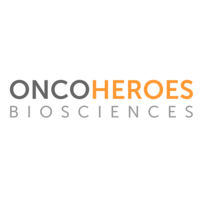Request Demo
Last update 08 May 2025
FLT3 x c-Kit x PDGFRβ x FGFR3 x VEGFR
Last update 08 May 2025
Related
1
Drugs associated with FLT3 x c-Kit x PDGFRβ x FGFR3 x VEGFRMechanism FGFR3 antagonists [+4] |
Active Org. |
Originator Org. |
Active Indication |
Inactive Indication |
Drug Highest PhasePhase 2 |
First Approval Ctry. / Loc.- |
First Approval Date20 Jan 1800 |
64
Clinical Trials associated with FLT3 x c-Kit x PDGFRβ x FGFR3 x VEGFRNCT05571969
A Phase Ib, Open Label, Multicenter Study to Determine the Maximum Tolerated Dose (MTD) of PARPi 2X-121 Monotherapy and the MTD of Dovitinib in Combination With 2X-121 in Patients With Advanced Solid Tumors
This is a Phase Ib, two-part, multi-center study. In Part 1, the study will evaluate the safety and tolerability, antitumor activity, pharmacokinetics, and determine the maximum tolerated dose (MTD) of 2X-121 monotherapy (at BID regimen) in patients with advanced solid tumors. In Part 2, the study will evaluate safety and tolerability, antitumor activity, pharmacokinetics and determine the MTD of dovitinib when given in combination with the MTD of 2X-121 determined in Part 1.
Start Date20 Feb 2023 |
Sponsor / Collaborator |
NCT02268435
A Trial of Dovitinib in Combination With Imatinib in Patients With Metastatic or Unresectable Gastrointestinal Stromal Tumors After Failure to Imatinib and Sunitinib
The objective of this study is to determine the recommended dose of combination of dovitinib and imatinib in phase I study.
Start Date01 Mar 2015 |
Sponsor / Collaborator |
100 Clinical Results associated with FLT3 x c-Kit x PDGFRβ x FGFR3 x VEGFR
Login to view more data
100 Translational Medicine associated with FLT3 x c-Kit x PDGFRβ x FGFR3 x VEGFR
Login to view more data
0 Patents (Medical) associated with FLT3 x c-Kit x PDGFRβ x FGFR3 x VEGFR
Login to view more data
1
Literatures (Medical) associated with FLT3 x c-Kit x PDGFRβ x FGFR3 x VEGFRInternational Journal of Molecular Sciences
Establishment and Validation of Novel Prognostic Subtypes in Hepatocellular Carcinoma Based on Bile Acid Metabolism Gene Signatures Using Bulk and Single-Cell RNA-Seq Data
Article
Author: Qu, Yimo ; Wei, Jinfen ; Zhao, Ziyuan ; Gong, Xiaocheng ; Zhang, Zimei ; Du, Hongli ; Huang, Yuting ; Xie, Qingsong ; Zhang, Qian ; Liu, Yunfei
1
News (Medical) associated with FLT3 x c-Kit x PDGFRβ x FGFR3 x VEGFR03 Sep 2024
Boston, MA, Sept 3, 2024 – Oncoheroes Biosciences Inc. ("Oncoheroes") and Novartis have signed a worldwide, exclusive licensing agreement for dovitinib, a multi-tyrosine kinase inhibitor originally developed by Novartis. Under the terms of this agreement, Novartis granted Oncoheroes the exclusive rights to research, develop, and commercialize dovitinib for pediatric oncology indications.
Dovitinib is a pan-tyrosine kinase inhibitor (TKI) of multiple proteins known to be overexpressed in osteosarcomas and other bone sarcomas, including fibroblast growth factor receptor (FGFR), vascular endothelial growth factor receptor (VEGFR), and other receptor tyrosine kinases (RTKs). It has shown potential in treating various cancers by inhibiting pathways critical for tumor cell proliferation and survival and is considered, together with other TKIs, an interesting drug candidate for pediatric bone sarcomas.
Dovitinib received both Orphan Drug and Rare Pediatric Disease Designations from the U.S. Food Drug and Administration (FDA). In September 2023, Oncoheroes received FDA clearance (study may proceed notification) to advance an Investigational New Drug (IND) application for dovitinib, targeting advanced or relapsed pediatric solid tumors, including osteosarcoma.
“We are profoundly grateful to Novartis for this opportunity and partnership, which holds the promise of bringing new treatment opportunities to children battling cancer. This milestone is a testament to our unwavering commitment to advancing pediatric oncology and improving the lives of young patients and their families,” stated Ricardo Garcia, Oncoheroes’ CEO.
Oncoheroes is currently in discussion with international clinical trial centers in North America and Australia in view of supporting a Phase 1/2 study for dovitinib in pediatric cancer patients.
About Oncoheroes Biosciences:
Oncoheroes Biosciences is a Boston-based biotech company exclusively focused on the discovery and development of better drugs for children and adolescents with cancer. Our vision is to deliver benefits to young cancer patients and create value in the process. Oncoheroes is actively looking for in-licensing opportunities in the pediatric oncology space while working to generate new proprietary assets for a number of pediatric cancer indications with high unmet medical needs.
Orphan DrugLicense out/inClinical StudyIND
Analysis
Perform a panoramic analysis of this field.
login
or

AI Agents Built for Biopharma Breakthroughs
Accelerate discovery. Empower decisions. Transform outcomes.
Get started for free today!
Accelerate Strategic R&D decision making with Synapse, PatSnap’s AI-powered Connected Innovation Intelligence Platform Built for Life Sciences Professionals.
Start your data trial now!
Synapse data is also accessible to external entities via APIs or data packages. Empower better decisions with the latest in pharmaceutical intelligence.
Bio
Bio Sequences Search & Analysis
Sign up for free
Chemical
Chemical Structures Search & Analysis
Sign up for free

